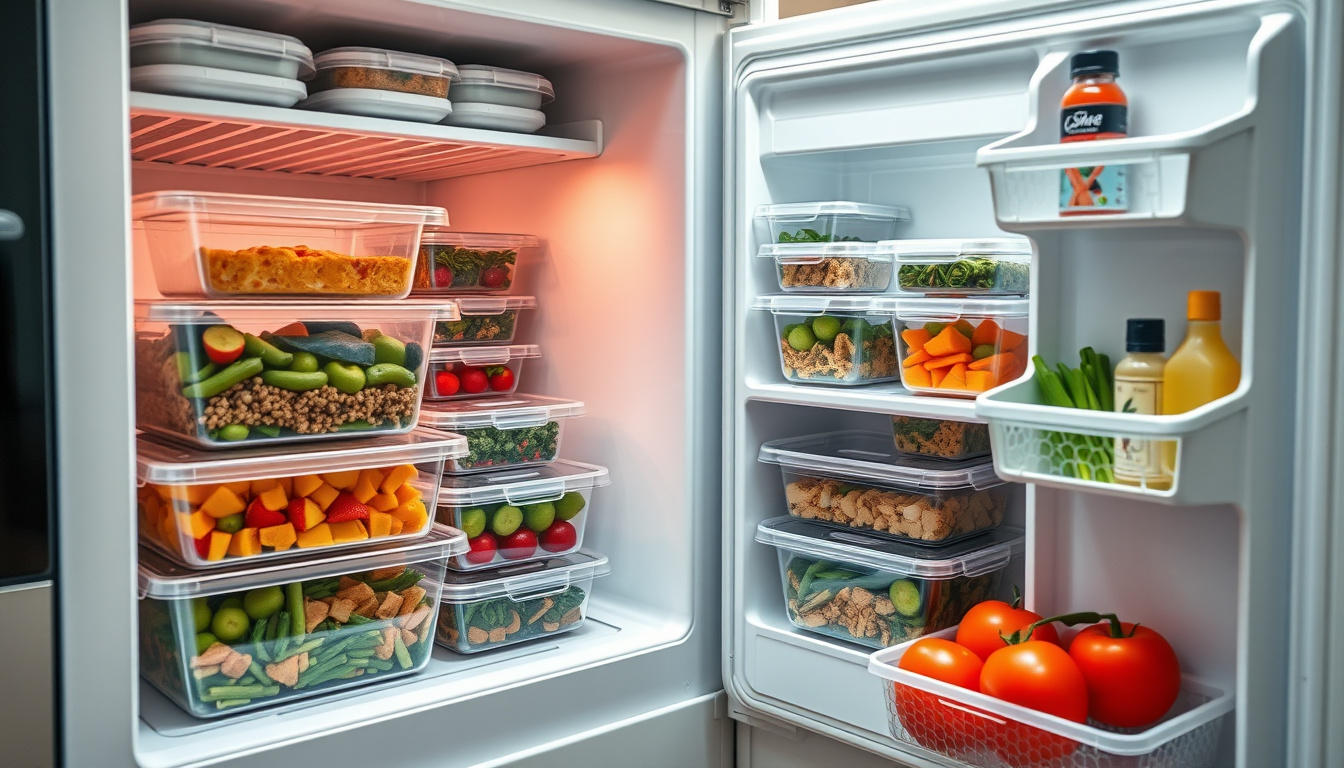Freezing leftovers in single servings is an efficient and convenient way to reduce food waste and ensure you always have a meal ready to go. Whether you’re a busy professional, a student juggling multiple commitments, or simply someone who wants to make mealtime easier, mastering this technique can transform your approach to cooking and dining. Here’s everything you need to know about effectively freezing your leftovers in single servings.

The Benefits of Freezing Single Servings
1. Reduces Food Waste
Freezing leftovers allows you to preserve food that might otherwise go bad. By storing meals in single portions, you can avoid the dilemma of wondering what to do with uneaten food. Instead of scrambling to use leftovers before they spoil, you can store them for later enjoyment.
2. Saves Time and Money
Having pre-prepared meals on hand reduces the time you need to spend cooking on busy nights. Just grab a container from the freezer, heat it up, and you’re ready to eat—no extra efforts required! This not only saves time but also contributes to financial savings. Cooking in bulk and freezing portions allows you to take advantage of sales and reduce reliance on takeout.
3. Increases Meal Variety
Freezing single servings allows you to diversify your meals. You can freeze smaller quantities of various dishes, giving you the flexibility to choose different meals throughout the week. When hunger strikes, you can pick and choose from a range of flavors rather than being stuck with the same leftover dish.
How to Properly Freeze Leftovers
1. Prepare Your Leftovers
Before freezing, make sure your leftovers are cooled down to room temperature. This helps prevent freezer burn and maintains the quality of the food.
2. Choose the Right Containers
The choice of storage containers can make a big difference. Here are a few recommended options:
- Freezer-Safe Bags: Ideal for soups, stews, and marinades. The flat design allows for easy stacking in the freezer.
- Plastic or Glass Containers: Perfect for solid meals. Make sure they are labeled "freezer-safe" and have tight-sealing lids to prevent air from getting in.
- Ice Cube Trays: An excellent option for freezing sauces, herb cubes, or meal components like pureed vegetables.
3. Portion Control
When freezing, aim for portions that suit your meal preferences. Consider using measuring cups or a food scale to create consistent serving sizes. Remember that meals can often be reheated from frozen, so you don’t have to worry about using up leftovers in one sitting.
4. Label and Date
Proper labeling is critical to ensure that you use your frozen meals while they are still good. Use freezer tape or markers to note the contents and the date of freezing. Generally, most meals can be stored for 3 to 6 months without significant loss of flavor or quality.
Best Foods to Freeze
While almost any food can be frozen, some fare better than others. Here’s a quick guide to what typically freezes well:
- Soups and Stews: These are great for freezing, especially if they don’t contain dairy, which can separate when thawed.
- Casseroles and Pasta Dishes: Dishes like lasagna and mac & cheese freeze well. Consider undercooking pasta slightly so they finish cooking when thawed.
- Cooked Meats: Roast chicken, beef, and fish can be portioned out and frozen for later use.
- Vegetables: Most veggies can be sautéed before freezing, allowing them to retain better texture upon reheating.
Foods that are tricky to freeze:
- Leafy greens can become soggy and should be used in cooked dishes post-thaw.
- High-fat sauces may separate after freezing and should be added freshly.
Ideas for Freezer-Safe Meals
Here’s a quick list of meals that work beautifully for freezing:
- Vegetable soups (e.g., tomato bisque, butternut squash)
- Chicken or vegetable casseroles
- Breakfast burritos or sandwiches
- Meatloaf slices
- Grain bowls with quinoa or rice
Tips for Thawing and Reheating
- Plan Ahead: If possible, thaw overnight in the refrigerator. For last-minute meals, you can also microwave meals directly from the freezer.
- Stovetop Method: For soups and stews, reheating in a pot on the stove is often the best method, allowing you to achieve the desired temperature without compromising the texture.
- Avoid Refreezing: Once thawed, it’s best to use leftover meals within a few days, as refreezing can compromise quality and safety.
Embracing the practice of freezing meals in single servings not only helps in meal prep but also promotes a more sustainable lifestyle by minimizing food waste. With these tips in hand, you can confidently stock your freezer, knowing that a delicious, home-cooked meal is just a few minutes away.
>> Chest Freezer Reviews <<
>> Upright Freezer Reviews <<

